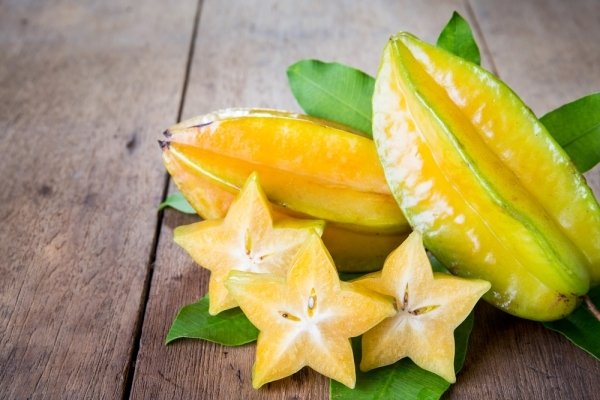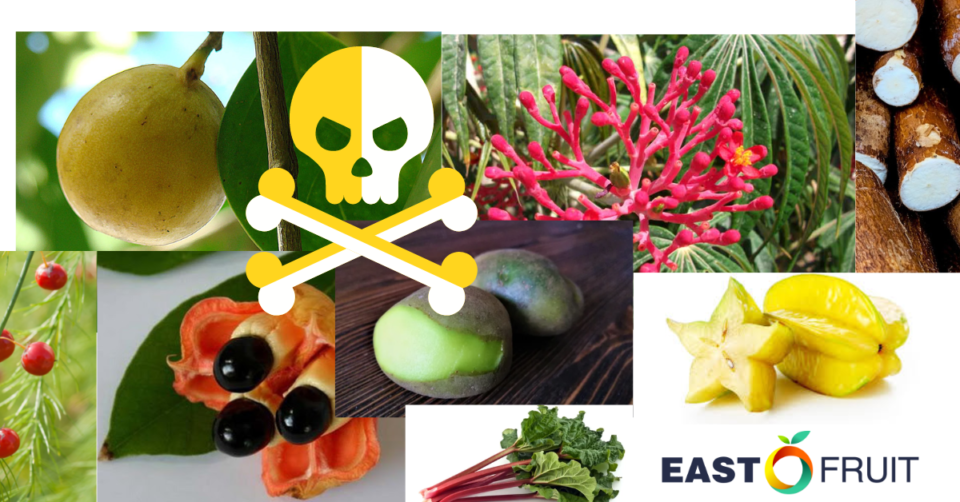Fruits and vegetables are not just about juicy flavors and health benefits. Sometimes, behind their bright appearance, pleasant aroma, and appetizing forms lies a danger to human health. EastFruit presents the most dangerous fruits, vegetables, and nuts in the world, the consumption of which can be fatal to humans. Here is the top list of the most hazardous ones!
1. Manchineel — The Apple of Death
The Manchineel (Hippomane mancinella), also known as the “beach apple” or “apple of death,” conceals a deadly threat behind its harmless appearance. The fruits of this tree look, smell, and even taste like regular apples. However, one touch of this “apple” can cause severe respiratory issues.
The most dangerous part of the Manchineel is its sap. A tiny drop of this poisonous substance, containing phorbol and hippomane toxins, can cause severe burns on the skin and unbearable pain. From touch to ingestion, any interaction with the parts of the tree can lead to serious consequences, ranging from gastrointestinal disorders to convulsions, and even death.
Growing in the Caribbean, Mexico, South America, and parts of South Florida, the Manchineel is considered the most dangerous tree in the world. Its sap has been used by indigenous people as a weapon, and historical records suggest that it was this poison that killed the explorer Juan Ponce de León in 1521.
Even during rain, the Manchineel poses a threat—standing under its branches can cause blisters from the droplets washed off the tree. The sap is so corrosive that it can even damage car paint. It seems that the legend of the “beach apples” is not just a myth but a serious warning for those who come too close to this treacherous tree.
The Manchineel reminds us that fruits can be not only beautiful but also deadly.
 2. Ackee Fruit (Blighia sapida) — A Dangerous Combination
2. Ackee Fruit (Blighia sapida) — A Dangerous Combination
The ackee fruit (Blighia sapida), small and vibrant, has long been a symbol of Jamaican cuisine. This exotic fruit, cherished by many food enthusiasts, is used in the preparation of traditional dishes. However, the ackee is not as simple as it seems. On one hand, when the ackee fruit ripens, it is safe to use and consume. On the other hand, unripe ackee contains the toxic hypoglycin A, which can lead to a condition known as “Jamaican vomiting sickness.” Symptoms of this illness can include vomiting, hypoglycemia, and even a comatose state, and in particularly severe cases, death.
The ripening process of the ackee is also quite fascinating. Fruits that are ready for consumption naturally open up, unveiling their ripe yellow flesh. This natural signal indicates that the toxins are no longer present and the fruit is safe to eat.
Despite its dangers, Jamaicans find the ripe flesh of the ackee to be a source of true gastronomic delight. This juicy and nutritious fruit is an integral part of Jamaica’s national cuisine. One of the most famous traditional dishes featuring ackee is “ackee and saltfish.” In this dish, salted cod is complemented by the delicate flesh of the ackee, creating a unique harmony of flavors. Jamaicans respect this fruit and know precisely when it is best to harvest and prepare it. For them, ackee is not just a fruit but an essential part of cultural heritage and national identity.
Ackee is a vivid example of how nature can combine danger and benefit, inspiring us to create culinary masterpieces that surprise and delight.
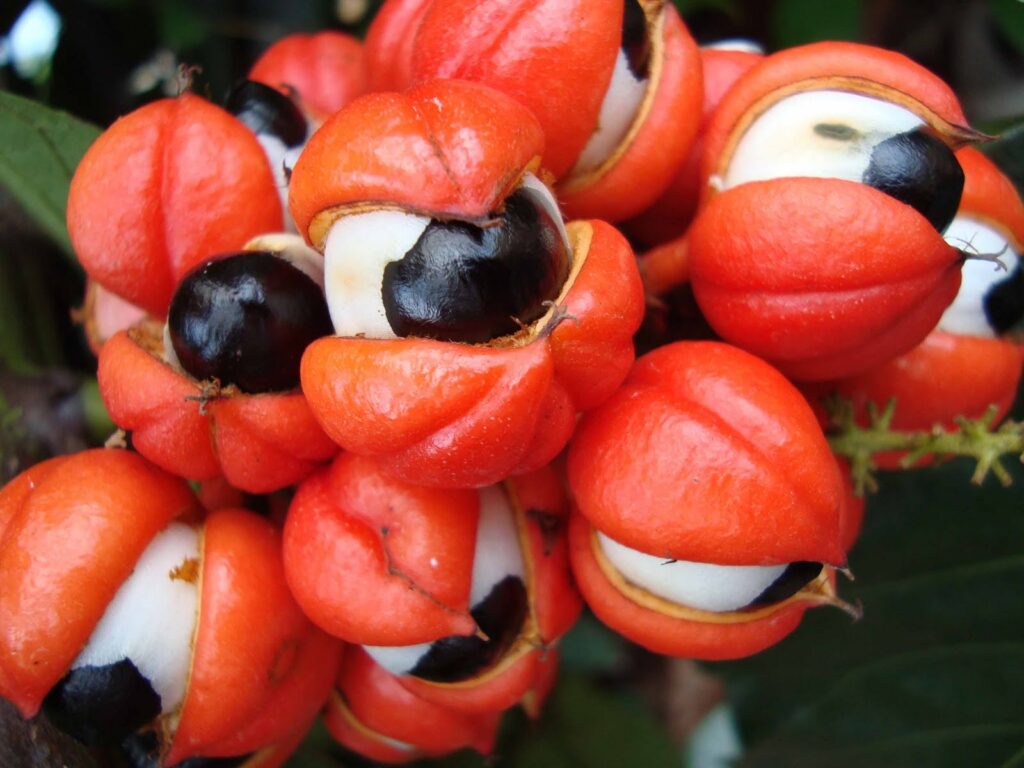 3. Jatropha curcas — The Toxic Plant with Energy Potential
3. Jatropha curcas — The Toxic Plant with Energy Potential
Jatropha curcas is a plant that thrives in tropical and subtropical regions worldwide. It produces visually appealing but extremely toxic fruits. The seeds of Jatropha contain a highly active toxin called curcin, which can cause a range of severe symptoms when ingested.
The fruits and juice of this plant are exceptionally toxic. Their consumption can lead to serious side effects, particularly dangerous for children. These include gastrointestinal discomfort, a burning sensation in the mouth and throat when seeds are swallowed, acute dehydration, gastroenteritis, as well as disruptions in the central nervous system and cardiovascular system.
Contact with the plant’s sap can also cause dermatitis, adding an extra layer of danger when handling Jatropha.
Despite its toxicity, Jatropha has significant economic value due to its oil, which is extracted from the plant’s seeds. This oil serves as a primary source of biofuel.
Jatropha can grow on infertile lands, minimizing competition with agricultural crops. This makes Jatropha a unique biofuel source that does not require significant resources for cultivation. Due to these properties, Jatropha continues to attract interest from both scientists and alternative energy producers.
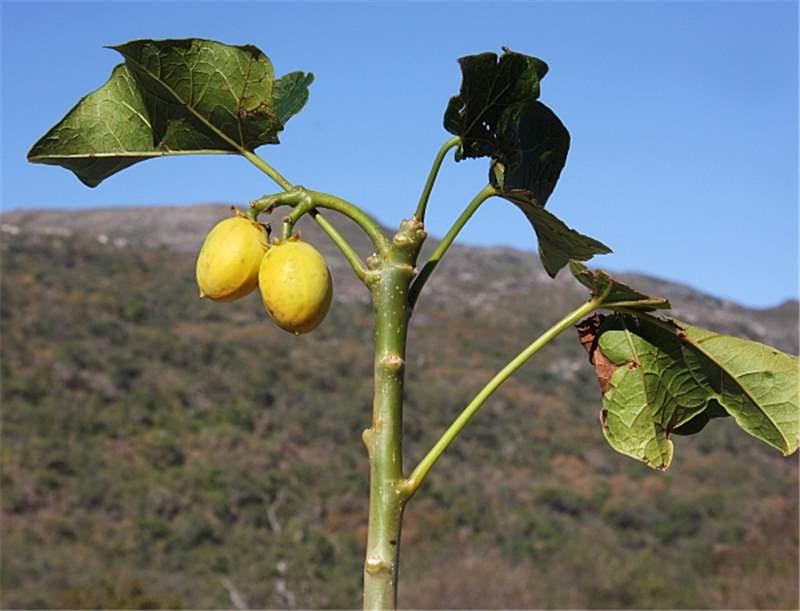 4. Strychnine Tree (Strychnos nux-vomica) or Chilibuha
4. Strychnine Tree (Strychnos nux-vomica) or Chilibuha
Chilibuha ordinary, or Vomit Nut (Latin: Strychnos nux-vomica), is a tropical deciduous tree, a species of the genus Strychnos (Strychnos) of the family Loganiaceae (Loganiaceae).
The strychnine tree, also known as chilibuha, ordinary chilibuha, or vomit nut, is a tropical plant that belongs to the family Loganiaceae (Loganiaceae). This tree is particularly notable for its small fruits, which can be orange or green. These fruits contain a powerful and deadly toxin — strychnine. Strychnine causes extremely dangerous, life-threatening symptoms even in small amounts. Among the first signs of poisoning are muscle spasms and convulsions, quickly leading to asphyxia. Therefore, maximum caution and safety care are required when contacting this tree.
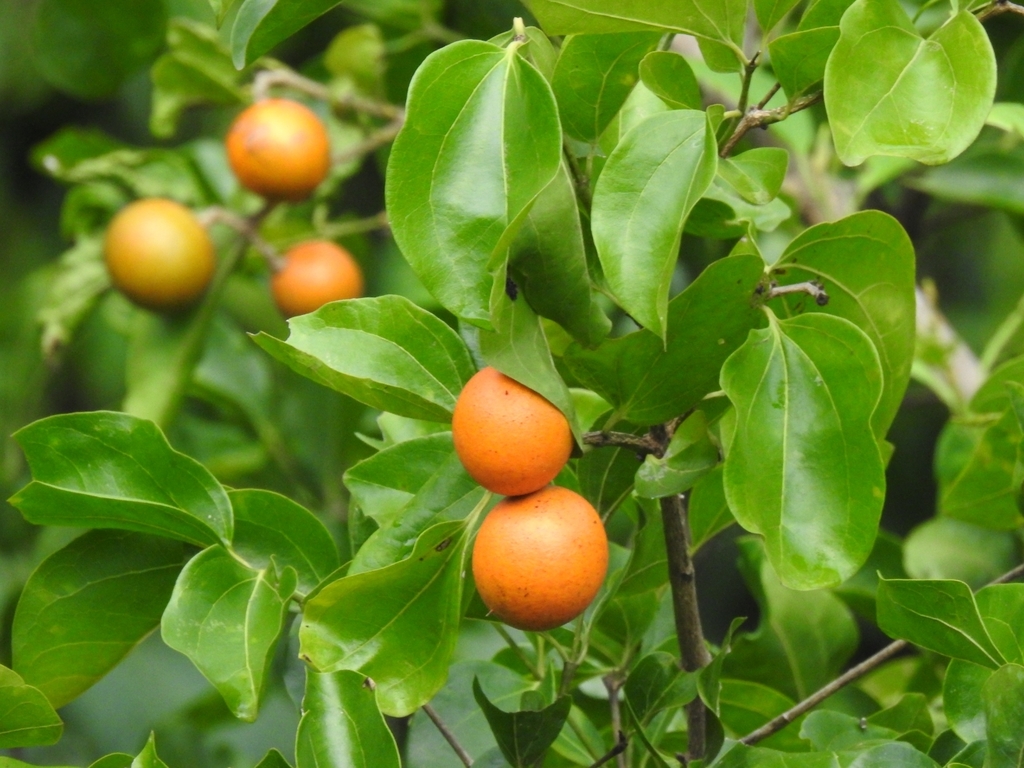 5. Abrus precatorius (Rosary Pea)
5. Abrus precatorius (Rosary Pea)
The Rosary Pea is a small, colorful plant resembling peas, whose seeds contain a toxin called abrin. Ingesting a single seed can be fatal, as abrin disrupts protein synthesis and causes severe damage.In addition to the Rosary Pea, there are other toxic fruits such as yew, castor beans, doll’s eyes, white snakeroot, deadly nightshade, and more. While many of these fruits are visually appealing, ingestion can lead to severe symptoms, including hallucinations, convulsions, and even death.
 6. Cherry Pits and Kernels are Poisonous!
6. Cherry Pits and Kernels are Poisonous!
Who would have thought?Spit out cherry pits because they contain the poisonous compound hydrogen cyanide. This also applies to other stone fruits like peaches, plums, and apricots… but don’t worry too much about it. Hydrogen cyanide is a poison, yes, but you would need to consume a ton of cherry pits for it to be lethal. According to the U.S. National Institutes of Health, the maximum dose for a 150-kilogram person is 703 milligrams of hydrogen cyanide per day.Inside an apricot pit is a smaller kernel that somewhat resembles an almond. To reach it, you would need to break the hard shell, which makes one wonder why anyone would bother. But people do, and apricot kernels have been used in cooking in some cultures for many years. The problem is that in large enough doses, they are poisonous. Thanks to numerous anecdotal stories and rumors over the years, there are quite a few people who also believe that an apricot kernel can cure cancer.

7. Green Potatoes: A Danger Worth Knowing
We all love potatoes, but few consider their safety. Green potatoes can be dangerous when consumed in large quantities. This fact is scientifically backed and deserves close attention.
The green color of potatoes is due to the presence of chlorophyll, which is harmless by itself. However, this green tint indicates the presence of solanine – a toxin that can be harmful to health.
What is Solanine?
Solanine is a glycoalkaloid found in all parts of the potato plant, especially in unripe, green tubers and their sprouts. Solanine serves as a defense mechanism for the plant against pests, but it can be dangerous for humans. The U.S. National Library of Medicine confirms that consuming large amounts of solanine can cause serious health issues, including:
— Dizziness and headaches
— Nausea and vomiting
— Diarrhea and stomach pain
— In severe cases – disruption of the nervous system and respiration.
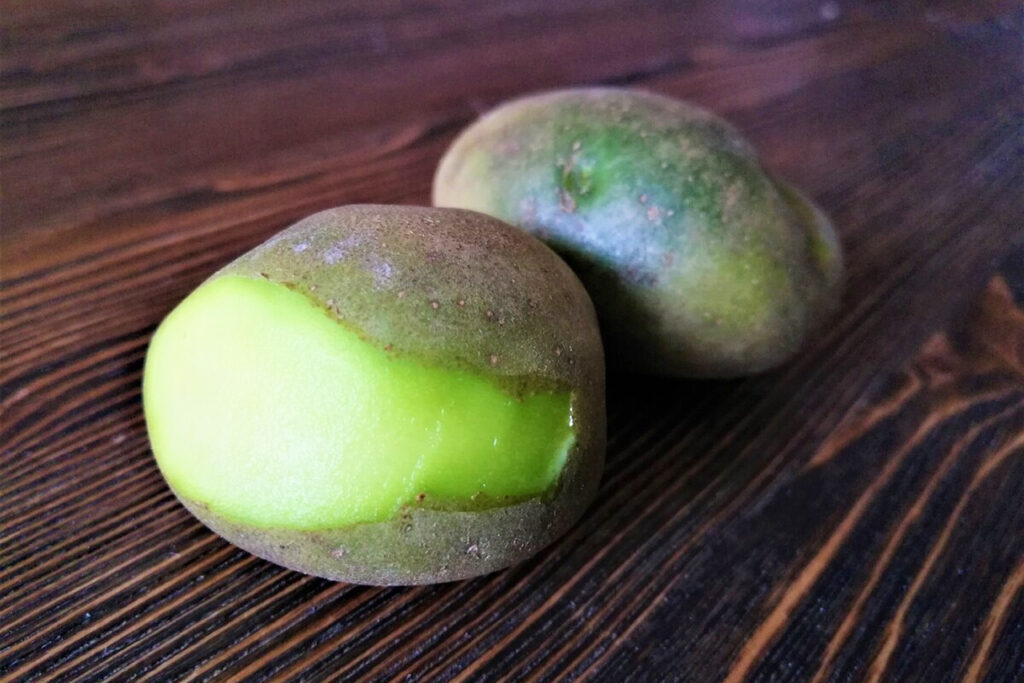 8. Green Almonds and Cashews — Forbidden Foods
8. Green Almonds and Cashews — Forbidden Foods
Raw almonds may look appealing, but they hide a deadly danger. Bitter almonds in their raw form are full of cyanide – an extremely toxic substance that can lead to fatal poisoning.
However, before panicking, it’s important to know that the issue lies with bitter almonds, not the sweet ones we commonly consume. To use bitter almonds in the industry, they must undergo thorough thermal processing to remove toxic substances. Thus, all almond products available in stores are treated and safe.
Cashews can also be dangerous in their raw state. Raw cashews contain urushiol – a toxin that can cause severe allergic reactions upon skin contact or ingestion. However, like almonds, cashews are processed before reaching the market, ensuring their safety.
While raw almonds and cashews are potentially dangerous, the likelihood of encountering this risk is minimal. Store shelves are filled with processed and safe nuts that can be consumed without fear. To get cyanide poisoning from bitter almonds, you would need to eat about 1,150 kernels, which is highly improbable.
Nevertheless, it is important to be aware and cautious, especially when buying nuts from unverified sources. Always prefer purchases from trusted stores and read labels to ensure the product’s quality and safety.
 9. Rhubarb — A Vibrant Vegetable with a Dark Side
9. Rhubarb — A Vibrant Vegetable with a Dark Side
Rhubarb always delights the eye with its bright pink color and often appears in pies and jams. However, beware: the leaves of this attractive vegetable should never be cooked or baked.
The reason is that rhubarb leaves contain oxalic acid, a toxic substance capable of causing serious health issues. While it would take about 11 pounds of leaves to be lethal, even small amounts can be dangerous. Symptoms of poisoning include nausea, diarrhea, difficulty breathing, eye pain, and red urine.
Kidney-related problems, including stones and failure, can be especially hazardous consequences. Therefore, despite its brightness and appeal, rhubarb demands caution during preparation.
Let rhubarb continue to decorate your culinary masterpieces, but remember its dark side and never use the leaves in food!

10. Dangerous Properties of Cassava: Important to Know Before Consumption
Regardless of the variety – sweet or bitter – cassava requires a careful approach to preparation, as consuming it raw is unsafe. This tropical tuber, often used to make dishes like pudding, is a staple food for more than 800 million people worldwide. However, despite its popularity, cassava can release cyanide, making it potentially hazardous to health.
Cassava contains cyanogenic glycosides, which can convert into deadly cyanide. According to the U.S. National Library of Medicine, cyanide exposure from improperly prepared cassava can lead to acute poisoning or even death. Therefore, it’s crucial to follow proper preparation methods to prevent any health risks.
For safe consumption, you need to follow several steps. First, always peel the roots and cut them into small pieces. Then, rinse and soak the cassava in water for several hours. Heat treatment, such as boiling or baking, significantly reduces the content of cyanogenic compounds. Fermenting the tuber can also help break down the toxic substances.
 11. Asparagus: A Healthy Delicacy with a Poisonous Surprise
11. Asparagus: A Healthy Delicacy with a Poisonous Surprise
Asparagus, this exquisite vegetable, has won the hearts of food lovers worldwide. Due to its popularity, asparagus is actively grown on an industrial scale. But did you know that this green beauty has its dark secrets?
At first glance, asparagus seems completely harmless. However, hidden among its parts are small red berries that contain toxic substances. Asparagus is a vegetable that produces fruit (berries) which are poisonous. Generally, a vegetable is the edible part of the plant, which can be leaves, stems, or roots. Although the toxin in the berries is not too dangerous, it can cause stomach upset if consumed or skin irritation upon contact.
Furthermore, despite the tempting appearance of young shoots, they should also not be eaten raw to avoid unpleasant health consequences.
Let these little surprises not overshadow your enjoyment of this wonderful vegetable, but remember: asparagus, like everything in life, requires caution. Enjoy its taste, but be attentive!
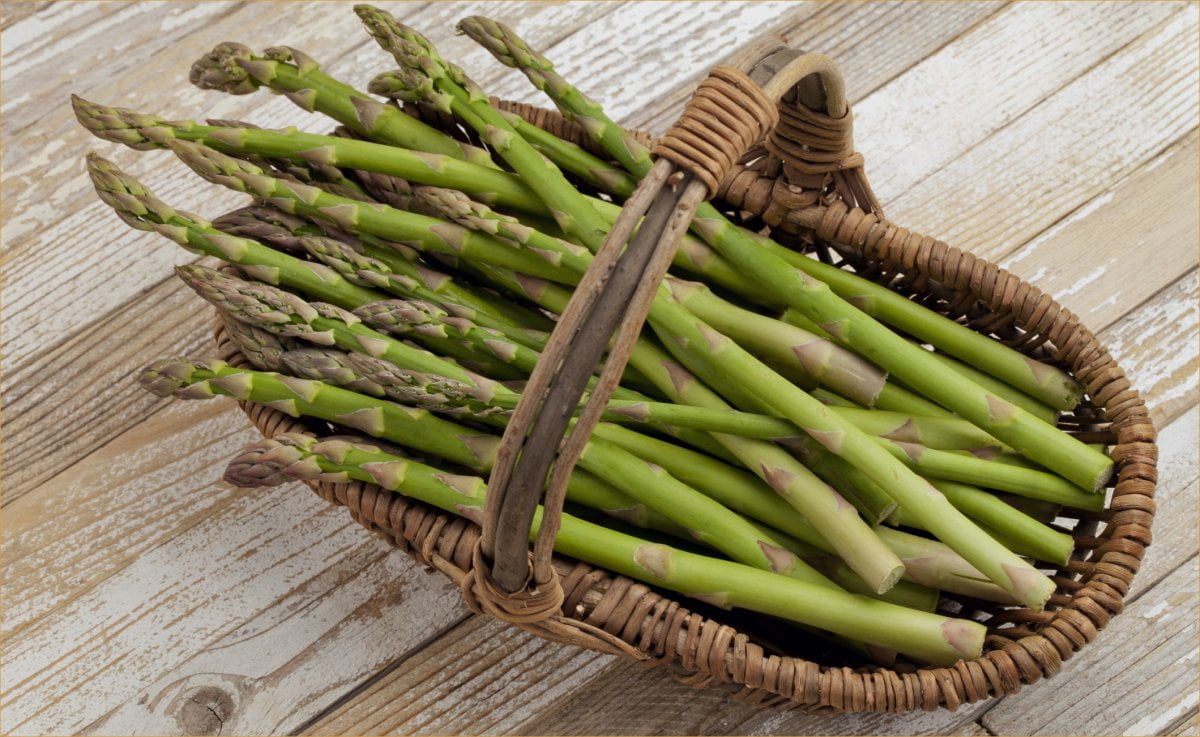 12. The Deceptive Star Fruit: What Makes Carambola Dangerous?
12. The Deceptive Star Fruit: What Makes Carambola Dangerous?
This exotic star is quite popular and readily available in supermarkets worldwide. The juicy, tangy-sweet fruit resembles an apple but, when sliced, turns into small, stylish stars that perfectly embellish a festive table. Carambola (or star fruit) is known not only for its appearance but also for its health benefits: it is low in calories, rich in fiber, and packed with vitamin C.
However, behind its beautiful “starry” appearance lies a hidden danger. Carambola contains a high amount of oxalates, making it particularly hazardous for people with kidney conditions. Consuming it in excessive amounts can lead to kidney damage, seizures, and even death. Moreover, those taking prescription medications should also be cautious, as star fruit can negatively interact with their effects.
So, if carambola lights up your festive table, remember moderation and be cautious. Stars should bring joy, not harm!
